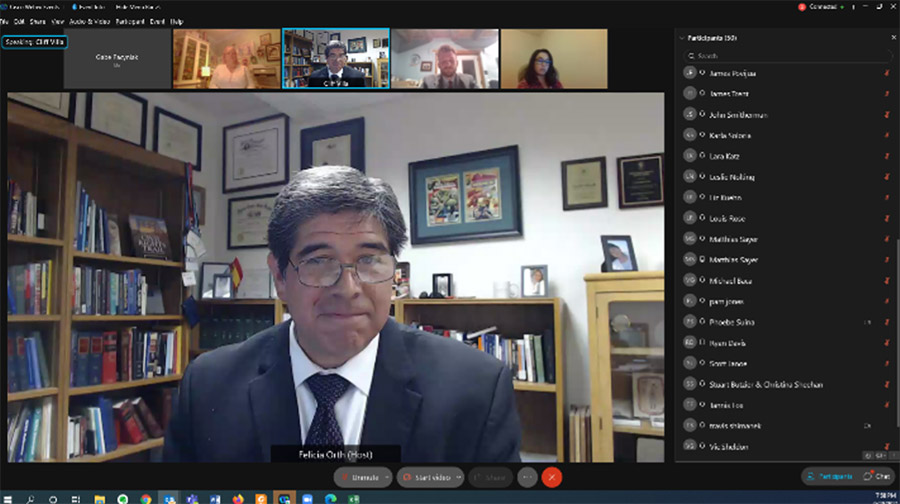Students from UNM School of Law Natural Resources and Environmental Law Clinic Argued for Stronger Protections in Ozone Precursor Regulations for NM Oil and Gas Regulations
April 15, 2022

On April 14, New Mexico’s Environmental Improvement Board (EIB) approved tough air pollution regulations for oil and gas facilities, including stronger protections for people who live near oil and gas wells. These regulations will protect thousands of New Mexicans from ozone pollution and will also reduce toxic pollutants and greenhouse gas emissions.

NREL Clinic Student Travis Shimanek Puts on Prof. Cliff Villa as an Expert Witness on Environmental Justice via Zoom in the Ozone Precursor Hearing
Students in UNM’s Natural Resources and Environmental Law Clinic represented the Center for Civic Policy and NAVA Education Project—organizations focused on promoting welfare of communities of color, and particularly Native American communities—in the formal rulemaking in front of the state’s Environmental Improvement Board on these proposed regulations to limit ozone precursors from oil and gas infrastructure. As part of their representation, the students put on witnesses, including UNM Professor Cliff Villa, who testified about the EIB’s duty to consider environmental justice impacts, as well as representatives from both organizations. A main goal of the Clinic’s intervention was to propose changes to the rule that would require more frequent leak detection and repair for facilities near where people live, work, and play.

NREL Clinic Student Travis Shimanek Puts on Prof. Cliff Villa as an Expert Witness on Environmental Justice via Zoom in the Ozone Precursor Hearing
The rulemaking is one of two rulemakings initiated in response to an executive order on climate change issued by New Mexico Gov. Lujan Grisham, and will apply to both new and existing sources of oil and gas pollution. Taken together, the two rulemaking will substantially reduce methane emissions from oil and gas infrastructure in New Mexico, the state’s largest source of greenhouse gas emissions.
Oriana Sandoval, CEO for the Center for Civic Policy stated: “The American Lung Association gave New Mexico’s top oil and gas producing counties - Lea, Eddy, and San Juan Counties - an F grade for ozone in its 2021 State of the Air Report. Overburdened communities bear the brunt of oil and gas waste and pollution. That’s why today’s action and the Lujan Grisham administration’s groundbreaking approach to hold the oil and gas industry accountable is so important.”
“Too many New Mexico communities are experiencing the serious health impacts of oil and gas pollution."
Joseph Hernandez, Diné Energy Organizer for the NAVA Education Project added, “Too many New Mexico communities are experiencing the serious health impacts of oil and gas pollution. Spills, leaks, venting, and flaring are taking a toll on all New Mexicans’ air, water and health, but rural communities, tribal communities, children and the elderly are especially at risk. Navajo communities are located across a patchwork of federal, state, and tribal lands where drilling affects public health and climate. The Lujan Grisham administration’s adoption of strict air pollution rules will help protect overburdened communities at the fence lines of oil and gas operations.”
The Natural Resources and Environmental Law Clinic is one of five clinic sections in the School of Law’s top-ranked clinic program, where third-year law students represent diverse clients in real world legal matters. Nearly a dozen students have worked representing their clients in the various phases of the development of these rules during the past three years. Prof. Gabe Pacyniak led supervision of the clinic’s students in this work.
The UNM School of Law applauds the work of the Natural Resources and Environmental Law Clinic students and believes this is big win for New Mexico’s communities.
